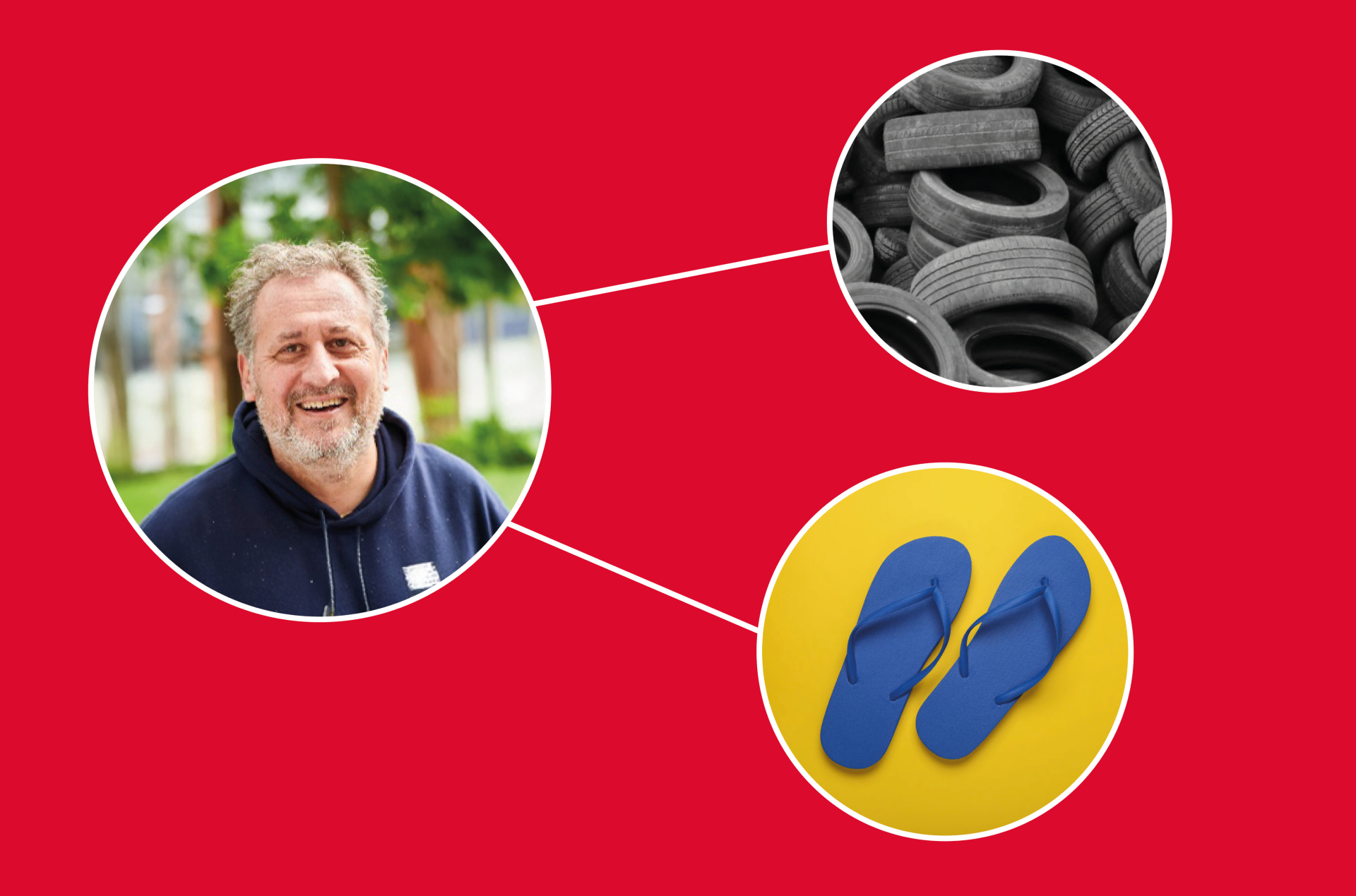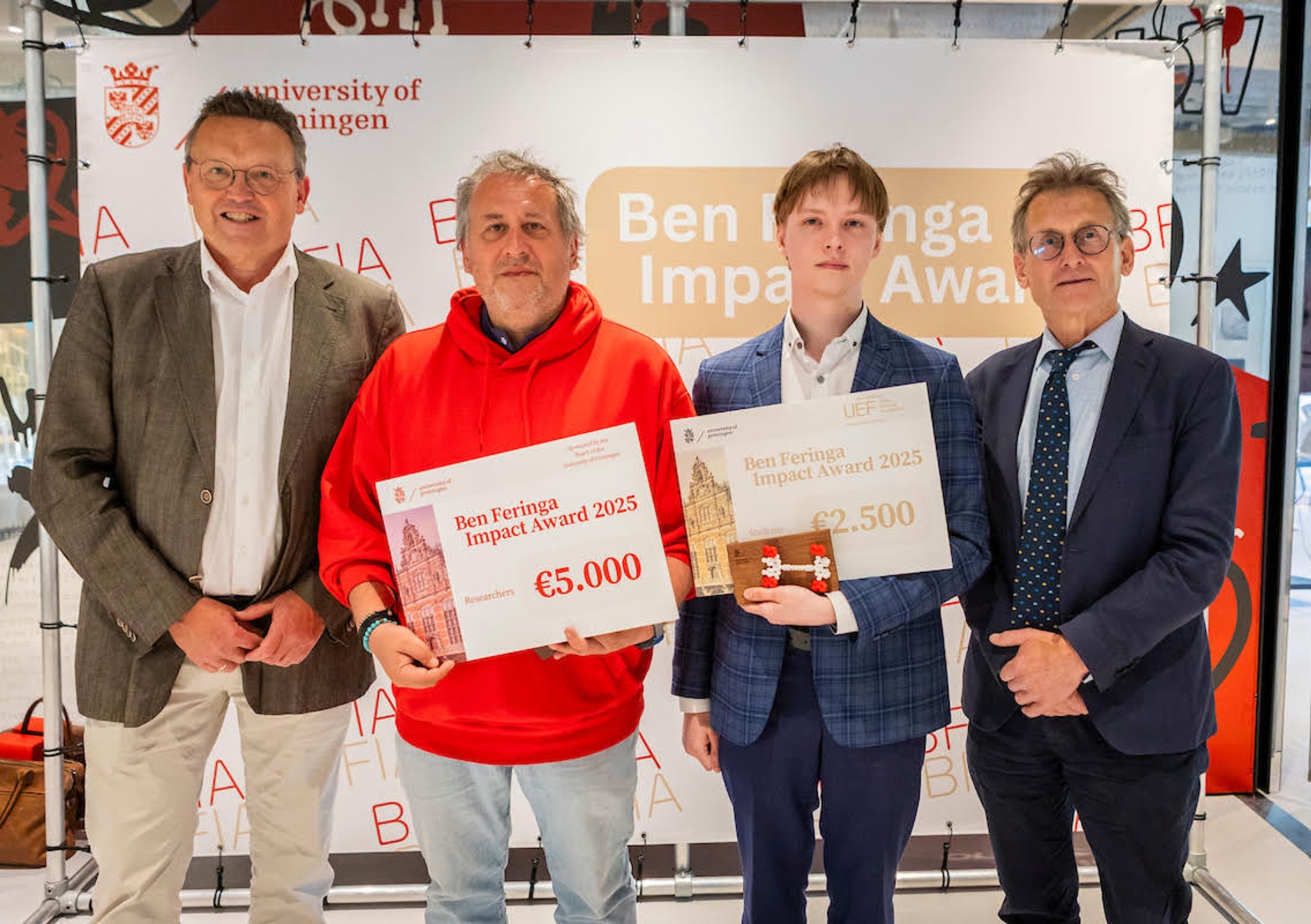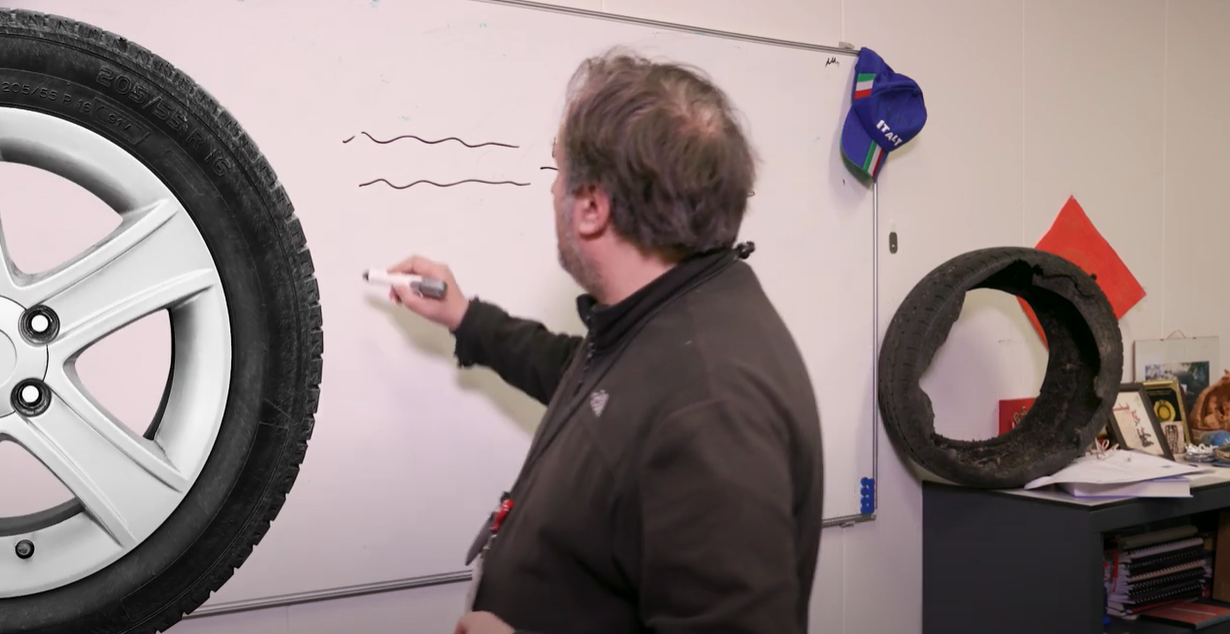Wetenschap Werkt | Recycling van rubber mogelijk dankzij revolutionaire methode
De wetenschap draagt dag in, dag uit bij aan oplossingen voor uiteenlopende maatschappelijke problemen. Van nieuwe medicijnen tot slimme oplossingen voor de landbouw; ons onderzoek helpt de maatschappij vooruit. Dit is echter niet altijd meteen zichtbaar. In de nieuwe rubriek Wetenschap Werkt, delen we daarom verhalen die gaan over concrete innovaties, producten en ideeën om te laten zien dat wetenschap werkt!
Tekst: Thomas Vos, Corporate Communicatie RUG
Hij ontving op 13 mei de Ben Feringa Impact Award (categorie onderzoekers): Francesco Picchioni, hoogleraar Chemische Technologie (FSE). Waarom hij deze prijs kreeg? Zijn belangrijke innovatie waarmee rubber zonder kwaliteitsverlies kan worden gerecycled. Start-up New Born Rubber maakt al gretig gebruik van zijn methode voor de productie van slippers en fietsmandjes.

Van grootschalige ontbossing (bijna even slecht als de productie van palmolie) tot verminderde biodiversiteit en ernstige lucht- en waterverontreiniging: de productie van rubber heeft een onmiskenbaar en negatief effect op het milieu en op de gezondheid van mens en dier. Bovendien komen veel rubberproducten, zoals autobanden, na gebruik terecht op grote niet-afbreekbare stortplaatsen of in vervuilende verbrandingsinstallaties.
Recyclen is lastig
Het recyclen van rubber is echter lastig: om oud rubber opnieuw te kunnen gebruiken, moeten zwavelbruggen worden afgebroken. Dat zijn chemische bindingen van atomen die vloeibare rubberstrengen bij elkaar houden. Hierdoor ontstaan er echter ook scheurtjes in de rubberstrengen zelf. Dat levert laagwaardig rubber op.
In kleine stukjes breken
Onderzoekers wereldwijd proberen al een tijdje een geschikte methode te ontwikkelen. Hoogleraar chemische technologie Francesco Picchioni besloot het anders aan te pakken dan zijn collega’s: “Ik ben altijd al een beetje eigenzinnig geweest en dacht: wat als ik die rubberstrengen nu gewoon in stukjes breek en iets bedenk om ze daarna weer aan elkaar te maken?”

Nieuwe techniek
Picchioni ontwikkelde een mechanische techniek om de rubber in stukjes te breken. Door die stukjes vervolgens op een willekeurige manier weer aan elkaar te binden met behulp van een chemische stof, ontstaat er een dikke vloeistof, die weer gevulkaniseerd kan worden. In dit proces wordt het rubber op een relatief hoge temperatuur bewerkt, waardoor er een zeer sterke binding ontstaat: Picchioni: “Het gehele proces, van het in stukjes breken van de rubberstrengen tot en met de vulkanisatie, resulteert in rubber dat zo goed als nieuw is. Daarmee kun je allerlei nieuwe hoogwaardige producten maken.”
New Born Rubber
Start-up New Born Rubber in Grootegast maakt inmiddels al gretig gebruik van Picchioni’s uitvinding. Het door investeerders, in samenwerking met Picchioni en collega’s van de RUG, opgezette bedrijf recyclet rubberen auto- en fietsbanden. Het bedrijf maakt er onder meer teenslippers en trendy fietsmanden van.
De enige ter wereld
Een van de oprichters van de start-up, Remko Bloembergen, liet het Dagblad van het Noorden weten dat “geen ander bedrijf ter wereld” in staat is om rubber op een zodanig hoogwaardige manier te recyclen. Het bedrijfsleven moet nog wennen aan gerecycled rubber, maar als het aan de oprichters ligt, wordt het binnen enkele jaren overal gebruikt.
Picchioni verdient zelf niet veel aan deze uitvinding, maar is toch tevreden: “Waar het mij om gaat, is dat ik hiermee een belangrijk probleem heb opgelost.”
Wil je meer voorbeelden van Wetenschap Werkt? Bekijk dan de overzichtspagina voor alle edities.

Meer nieuws
-
06 januari 2026
AI-phasie: kunstmatige intelligentie helpt bij taalgebrek
-
06 januari 2026
Beter zicht op de werkpaarden van ons lichaam
